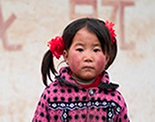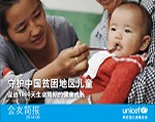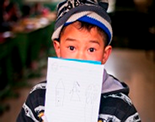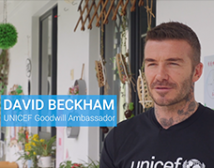The success of fast food chains in China, along with much of the world, has been very much dependent on the success of slick and wide spread marketing. Taste and quality have come second to the dictates of good sales techniques that play on perceptions of upward mobility, convenience and success.
As the rotten meat scandal in the fast food industry last year illustrated, advertising may not be the best way to determine what you feed your children, yet it does have a huge sway on how people determine what is best for them and their families. The marketing tactics used by the fast food industry are not dissimilar to the baby food industry, were profits are huge and marketing budgets large.
China is growth market, where according to Pathfinder research,[i] the baby food industry is growing by 10 to 15 percent every year, with more than 1.2 billion dollars' worth of sales in 2012.
So it is not surprising that exclusive breastfeeding rates are declining in China, which has dropped to 28 per cent.
Exclusive breastfeeding for the first six months of life and continued breastfeeding up to two years of age is the gold standard recommended by UNICEF and WHO. Global evidence has proven unequivocally it is the best investment for optimal growth and intellectual development of your child.
Yet despite this evidence, worldwide, 92 million children under six months of age, two out of three babies are either artificially fed or fed a mixture of breast milk and other foods.[ii]
A global Code on the Marketing of Breast milk Substitutes, endorsed by the World Health Assembly in 1981, which seeks to curtail the marketing of baby products to children under two, and adapted locally in a 1995 regulation, are proving to be vulnerable to the sophisticated marketing techniques employed by baby food companies.
Evidence by International Baby Action Network (IBFAN) clearly demonstrates that in many countries including in China, industry is using a multi prong approach combining industry lobbying to weaken national legislation, to free gifts to targeting mothers and health workers as well as giving free samples have all helped to increase market share.
A snapshot study by Save the Children in China found out that 40 per cent of mothers surveyed reported being given formula samples, 60 percent directly by the sales representatives of the companies, while 30 per cent said it was given directly by health workers.
So where does that leave those of us working in public health, where health education budgets are dwarfed by multimillion dollar formula marketing, and often face-to-face and piece-meal rather than through slick and systematic multimedia campaigns? There is no doubt that enforcement and regulation of the Code must be a top priority, but while there is money to be made, we know we are often facing an uphill battle in preventing violations.
The 10M2 of Love Campaign, launched just over a year ago in China by the National Centre for Women and Children's Health under China CDC and UNICEF, aims to promote breastfeeding in a practical and participatory way. It encourages everyone to get engaged in providing a safe and quiet place for a mother to breastfeed, if it be in public, an office or in a shop. It gets people to mark the space on a mobile APP map which can be downloaded and allow mothers to find a safe and quiet place to breastfeed.
The campaign also demonstrates that the private sector can be a force for good and engage in both committing space for breastfeeding in their stories, offices and other locations. But it was also designed with the best creative talent of an advertising agency who gave a pro bono contribution.
The success of the campaign, that went viral through social media, has resulted in breastfeeding spaces being opened in more than 90 cities across China, who have joined are now promoting breastfeeding through providing a safe place for mothers. The success of the campaign and the collaboration between the private and public sector was also acknowledged when the campaign won a Bronze Lion Health Award at the Cannes Advertising Awards, which is the world's biggest celebration of creativity in communications.
The success of the campaign in China has drawn attention further afield as other countries in Asia, all facing similar problems, look to see how they can replicate it.
For working mothers in China the response has been overwhelming positive, especially where their workplace has joined the campaign and designated a space to breastfeeding.
With no breastfeeding room at work Nianhua(penname)used the meeting room to pump after lunch. But in the afternoon, there were always meetings. Then, the toilet became her best choice to “make food for her baby.” Unfortunately, Nianhua's workplace didn't have an ideal toilet. Without an air conditioner, the temperature soared in summer, and she had to pump while enduring foul smelling air. Now her company has joined the campaign, she is pleased other working mothers will no longer have to go through this ordeal.
Although there is a long way to go to reverse the declining trends for breastfeeding, the success of mixing creativity, bringing the private sector on board and making breastfeeding hip and trendy, certainly demonstrates the battle is not yet lost.
[i] Global Pathfinder Report, Baby Food. International Markets Bureau, Market Indicator Report, July 2011
Agriculture and Agri-Food Canada
[ii]SAVE THE CHILDREN SUPER FOODS PUBLICATIONS






























